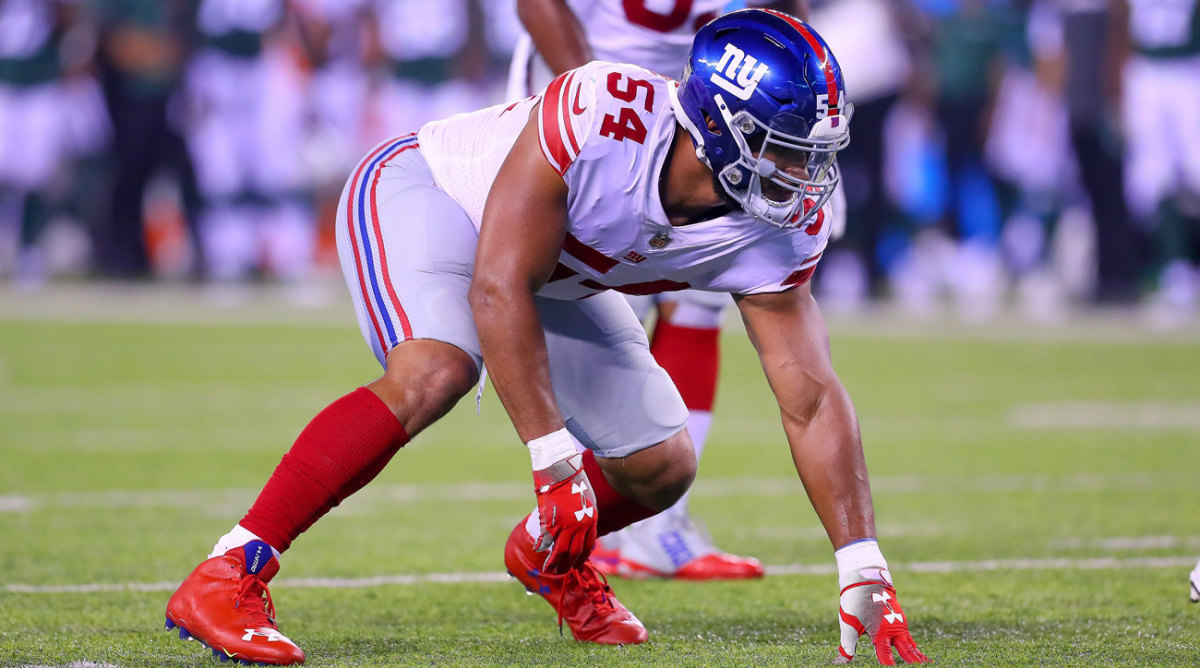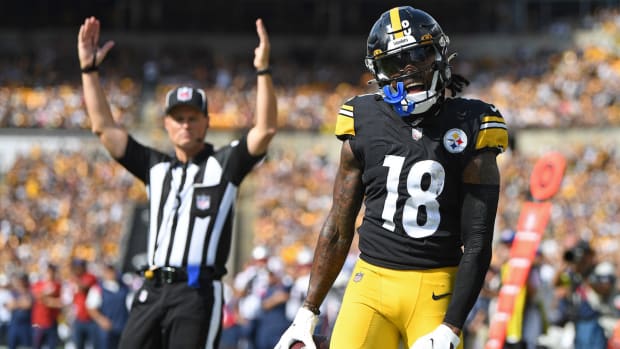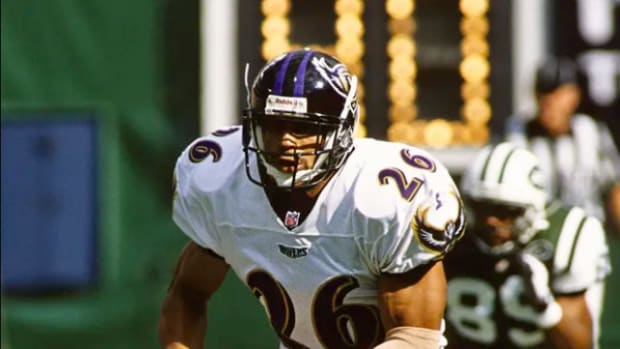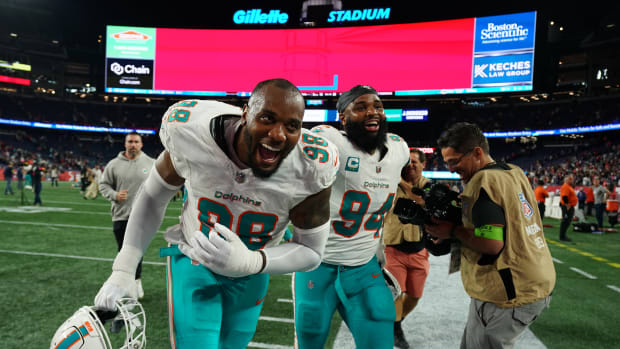Olivier Vernon For Kevin Zeitler Trade is Win-Win For Browns and Giants

Here’s what you need to remember about the $85 million contract Olivier Vernon scored from the Giants in 2016: It was, above all else, one of the greatest performances by an agent in NFL history. As Peter King, then of this very website, detailed, Vernon’s agent, David Canter, leveraged interest from the Jaguars, Jets and Giants into a fierce bidding war, with Vernon coming away looking like one of the NFL’s best defensive ends.
And he was, but not in a traditional sense. Vernon, who was traded to Cleveland Friday with a fourth-round pick for guard Kevin Zeitler and a fifth-rounder, was never going to produce stats commensurate with his paycheck. He has always been an uber elite run defender, blessed with an athletically angular body and a keen sense for leverage. But his twitch and explosiveness apply more to straight-line and confined-area movement, not edge-bending. And so he’s always been just a good-but-not-great pass rusher. He averaged just over 7 sacks per season in four years as a Dolphin, and practically the same total in his three years with the Giants. (In fairness, he averaged 8.5 sacks in his three seasons starting in Miami.)
Vernon was traded for Zeitler not because of his ho-hum pass rushing production, but because his run-stopping prowess slipped a bit in an injury-riddled 2018 campaign. He also did not quite have the premium multidirectional pliability to be a special chess piece in coordinator James Bettcher’s patented blitz packages. Instead of enduring Vernon’s $19.5 million cap hit at an edge position that Bettcher’s defensive scheme does not demand (not to the intense degree that most schemes demand, anyway), they’ll endure Zeitler’s $10 million cap hit at a right guard spot that, in their offensive scheme, does need to be filled.
A weakness of New York’s—interior O-line play—can now be a strength, with Zeitler solidifying the right guard spot opposite last year’s second-round left guard Will Hernandez. Guard play is where your rushing attack’s schematic diversity derives; the Giants suddenly have the pieces to do more than just the simple inside zone runs that have defined them in recent years. Which means Zeitler’s addition, theoretically, increases the value of arguably the team’s most important asset, Saquon Barkley.
As for Cleveland, this move makes sense because Vernon will be a one-year rental at a position of need in a year where they have the cap space to handle an inflated contract. (Spotrac indicates that Vernon has a cap hit of $15.25M in 2019 and 2020 and that he’s got zero dead cap left on his contract, which means Cleveland can cut him without penalty whenever…it also sets the Browns up to sign Vernon to an extension if they want more cap flexibility this year or next year.) Vernon won’t consistently collapse the pocket, but playing opposite Myles Garrett, he’ll face more 1-on-1 pass-blocking and allow fourth-year pro Emmanuel Ogbah to play fulltime inside in nickel, where Ogbah is much better suited. Wilks must be salivaing at the prospect of a third-down package with Garrett, Ogbah, Vernon and Larry Ogunjobi as the D-line. The Browns, in some respects, upgraded at two positions. And under Browns new defensive coordinator Steve Wilks, Vernon will play in more of a traditional 4-3, like he did in Miami.
Offensively, the Browns expect to be fine without Zeitler, with last year’s 33rd overall pick, Austin Corbett, presumably stepping in. Reviews of Corbett within the NFL are very mixed; some O-line coaches see him as a utility piece with high potential, others thought he was undraftable coming out of Nevada. Given the importance of having stellar guard play when franchise quarterback Baker Mayfield hovers around only 6-feet tall, it’s hard to fathom the Browns making this move without having faith in Corbett.
Because of the Mayfield factor (and, to a much lesser degree, Vernon’s larger contract), the Browns are taking the bigger risk in this trade, but it’s really a win-win for both clubs.
• Question or comment? Email us at talkback@themmqb.com.





































